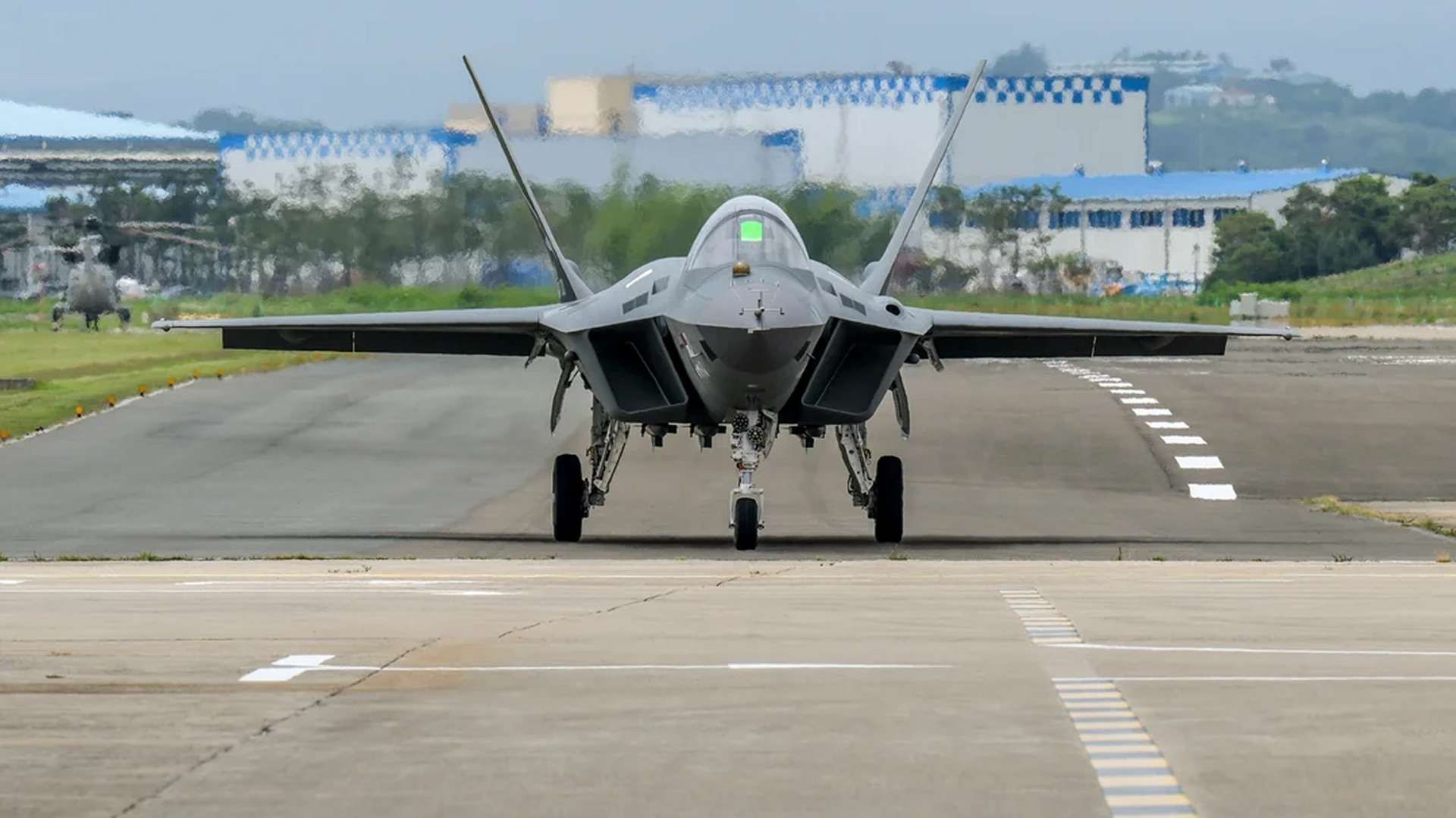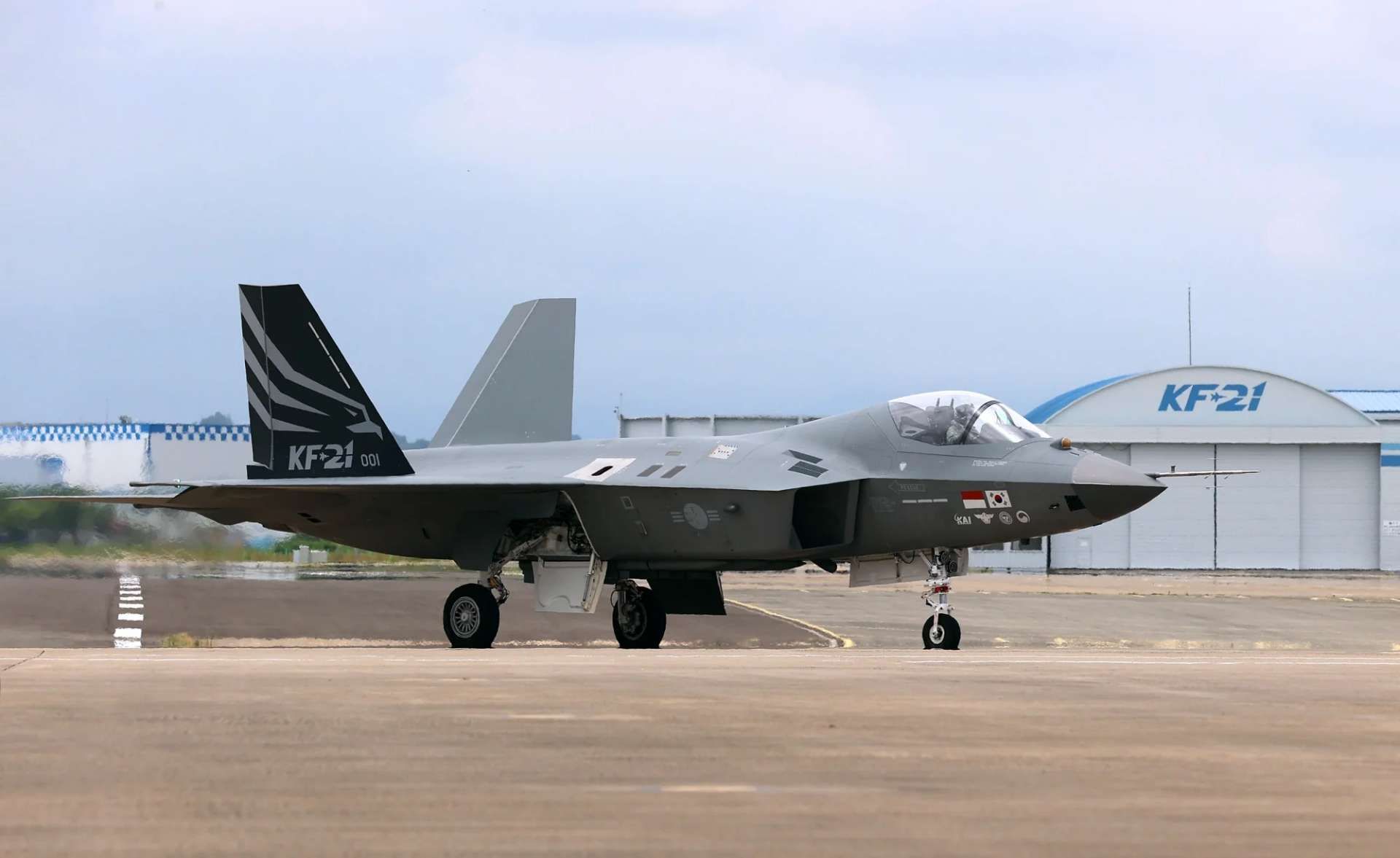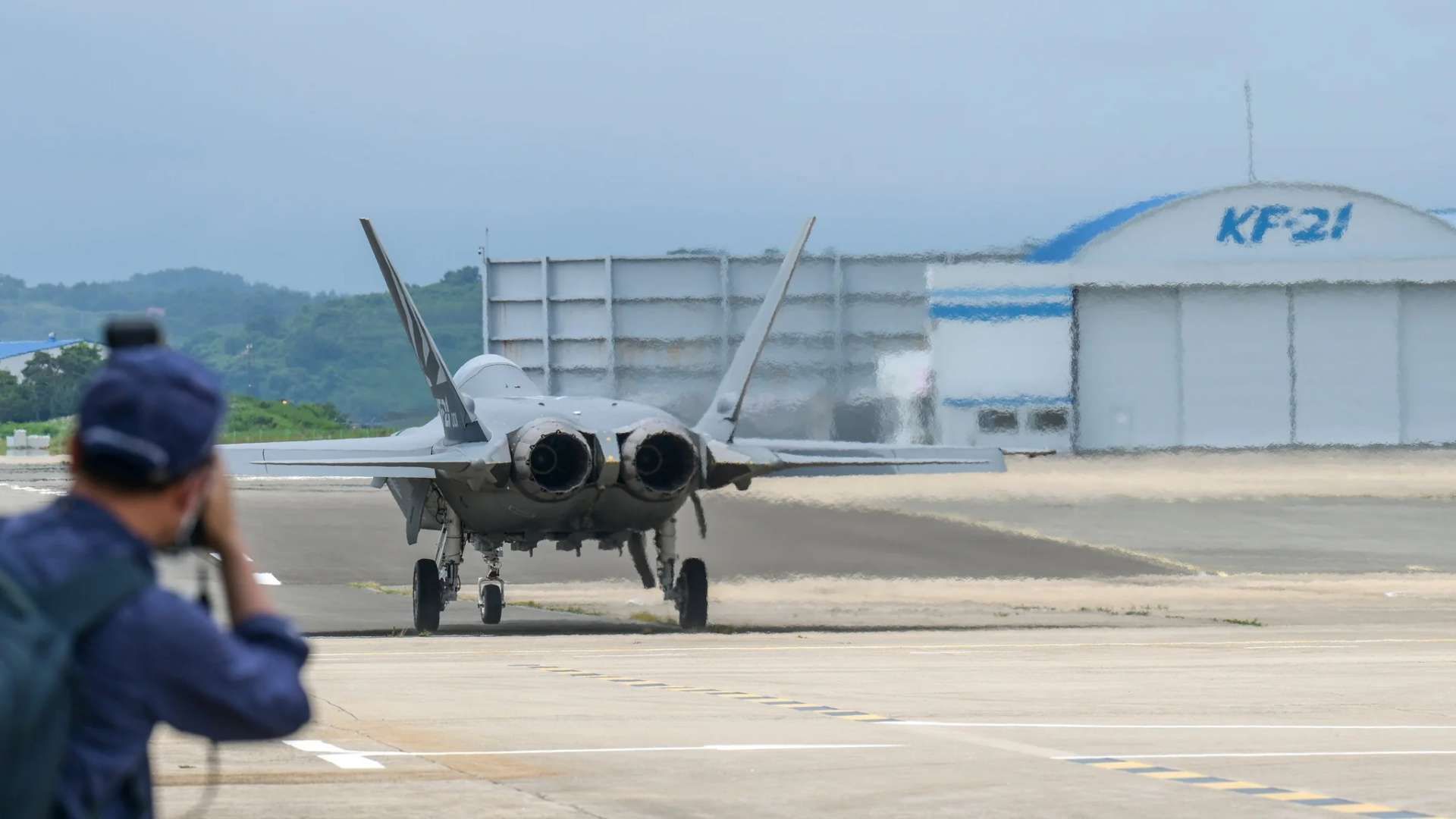Breaking News
South Korea offers 10 KF-21 Boramae Block I air superiority fighters to the Philippine Air Force.
On September 6, 2024, MaxDefense reported that Korea Aerospace Industries (KAI) had presented a new proposal to the Philippine Air Force (PAF) as part of its ongoing efforts to enhance air combat capabilities. In an interview with a KAI official, it was revealed that the South Korean company had offered a multifaceted package that includes the export of 12 new FA-50 Block 20 Fighting Eagle light combat aircraft, an upgrade of the PAF's current fleet of 12 FA-50PH units, and the potential sale of KF-21 Boramae fighter jets to meet the PAF's multirole fighter (MRF) requirements.
Follow Army Recognition on Google News at this link

Korea Aerospace Industries (KAI) presented a new proposal to the Philippine Air Force (PAF) including 10 KF-21 Boromae Block I air superiority fighters. (Picture source: MaxDefense)
This proposal aligns with the parameters set by the PAF's MRF Acquisition Phase 1, which has a budget allocation of approximately Php61.2 billion ($1,094,469,532). This budget was initially calculated based on Saab's offer to supply 12 to 14 new JAS-39C/D Gripen fighters. Under the current budget constraints, KAI estimates that the acquisition of 10 units of the KF-21 Block I, including Integrated Logistics Support (ILS), could be feasible within the Phase 1 budget. The KF-21 Block I aircraft is currently configured with full air-to-air capabilities, while its air-to-ground capabilities are limited. This configuration may be more suited for missions that focus primarily on air defense and air interdiction.
KAI has also indicated that upgrades to the KF-21 Block II, which will expand the aircraft’s capabilities to include a broader range of air-to-ground missions, are expected to become available by 2028. Depending on the terms agreed upon, the PAF could potentially receive these Block II upgrades almost simultaneously with the Republic of Korea Air Force (ROKAF). While the initial configuration of the KF-21 Block I has limited capabilities, acquiring the aircraft could enable the PAF to gain valuable operational experience with this type of fighter and quickly strengthen its air defense capabilities.
The South Korean government has expressed its readiness to guarantee support for the KF-21s if they are procured by the PAF. This commitment comes amid concerns that the PAF may face challenges investing in a relatively new platform that could still encounter developmental issues. Nevertheless, the support offered by the South Korean government could help mitigate these concerns and reassure the PAF of continued assistance in maintaining and operating the aircraft.

The KF-21 Boramae is a 4.5-generation multirole fighter aircraft developed by South Korea to replace older models such as the F-4 Phantom II and KF-5E/F in the South Korean Air Force. (Picture source: Reddit/rokarmedforces)
The Department of National Defense (DND) of the Philippines has acknowledged that funding constraints remain a significant factor in its plan to acquire 40 new multirole fighters. Given these financial considerations, the DND and PAF may prioritize moving forward with Phase 1 of the MRF Acquisition program, as the Philippine government could fund this phase without requiring special financing arrangements. Once the necessary legal and financial frameworks are established, the DND and PAF could then proceed with Phase 2 of the MRF program to support further acquisitions.
The KF-21 Boramae is a 4.5-generation multirole fighter aircraft developed by South Korea to replace older models such as the F-4 Phantom II and KF-5E/F in the South Korean Air Force (ROKAF). The project originated in the early 2000s and underwent several feasibility studies, with international collaboration involving Indonesia in the development effort. The KF-21 project aims to strengthen South Korea's indigenous fighter production capabilities and reduce its dependence on foreign suppliers for military technology.
The KF-21 has several planned variants, including Block I, Block II, and Block III, as well as potential derivatives like the KF-21N (carrier-based version), KF-21EA (electronic warfare variant), and KF-21SA (export version). Block I focuses on basic air-to-air capabilities, Block II aims to enhance air-to-ground missions and sensor capabilities, and Block III (KF-21EX) is planned to incorporate more advanced stealth features and integration with unmanned systems.

The design of the KF-21 emphasizes reduced radar cross-section (RCS) characteristics and provisions for future upgrades to include full stealth capabilities. (Picture source: Reddit/rokarmedforces)
The Block I version, scheduled for production from 2024 to 2028, is configured mainly for air-to-air combat roles with limited air-to-ground capabilities. It includes semi-embedded weapons and advanced radar and sensor systems. Forty units are planned for delivery to the ROKAF, with an additional 50 units for the Indonesian Air Force.
The design of the KF-21 emphasizes reduced radar cross-section (RCS) characteristics and provisions for future upgrades to include full stealth capabilities. It features a delta-wing configuration with canards to provide agility and maneuverability. The design includes a provision for an internal weapons bay in later variants and utilizes composite materials to lower weight and optimize performance.
Key features of the KF-21 include a glass cockpit with a large-area display (LAD) and a range of avionics, such as sensor fusion technology that integrates data from multiple onboard and external sensors. The aircraft uses a digital Fly-By-Wire (FBW) control system, nonlinear dynamic model inversion control, and safety features such as automatic terrain following and ground collision avoidance systems. It also employs radar-absorbing materials (RAM) and structures (RAS) to minimize radar visibility.

In terms of performance, the KF-21 is powered by the F414-GE-400 engine, providing a thrust-to-weight ratio similar to that of the Eurofighter Typhoon. (Picture source: Reddit/rokarmedforces)
In terms of performance, the KF-21 is powered by the F414-GE-400 engine, providing a thrust-to-weight ratio similar to that of the Eurofighter Typhoon. The aircraft is designed for maneuverability, with low wing loading and advanced flight control systems that support agility and high angle-of-attack capabilities. It has a maximum speed of Mach 1.8 and a combat radius of approximately 1,800 kilometers, depending on the mission profile and loadout.
The KF-21 is equipped with an Active Electronically Scanned Array (AESA) radar that allows for simultaneous tracking and engagement of multiple targets. This radar is complemented by an infrared search and track (IRST) system and electro-optical targeting pods (EOTGP), which enable the detection and targeting of aircraft at extended ranges. The avionics suite includes an integrated electronic warfare system, comprising radar warning receivers (RWR), electronic countermeasures (ECM), and countermeasure dispensing systems (CMDS), along with data fusion capabilities for enhanced situational awareness and targeting.
The KF-21 can carry a variety of air-to-air and air-to-ground weapons, including the AIM-9X Sidewinder, AIM-120 AMRAAM, MBDA Meteor, and IRIS-T missiles. The aircraft is fitted with 10 external hardpoints, with plans for an internal weapons bay in future versions. Its ground-attack capabilities include guided bombs, anti-ship missiles, and various domestically developed munitions, such as the Cheonryong air-launched cruise missile (ALCM). Additionally, the KF-21 is equipped with an M61A2 Vulcan cannon for short-range engagements.


























